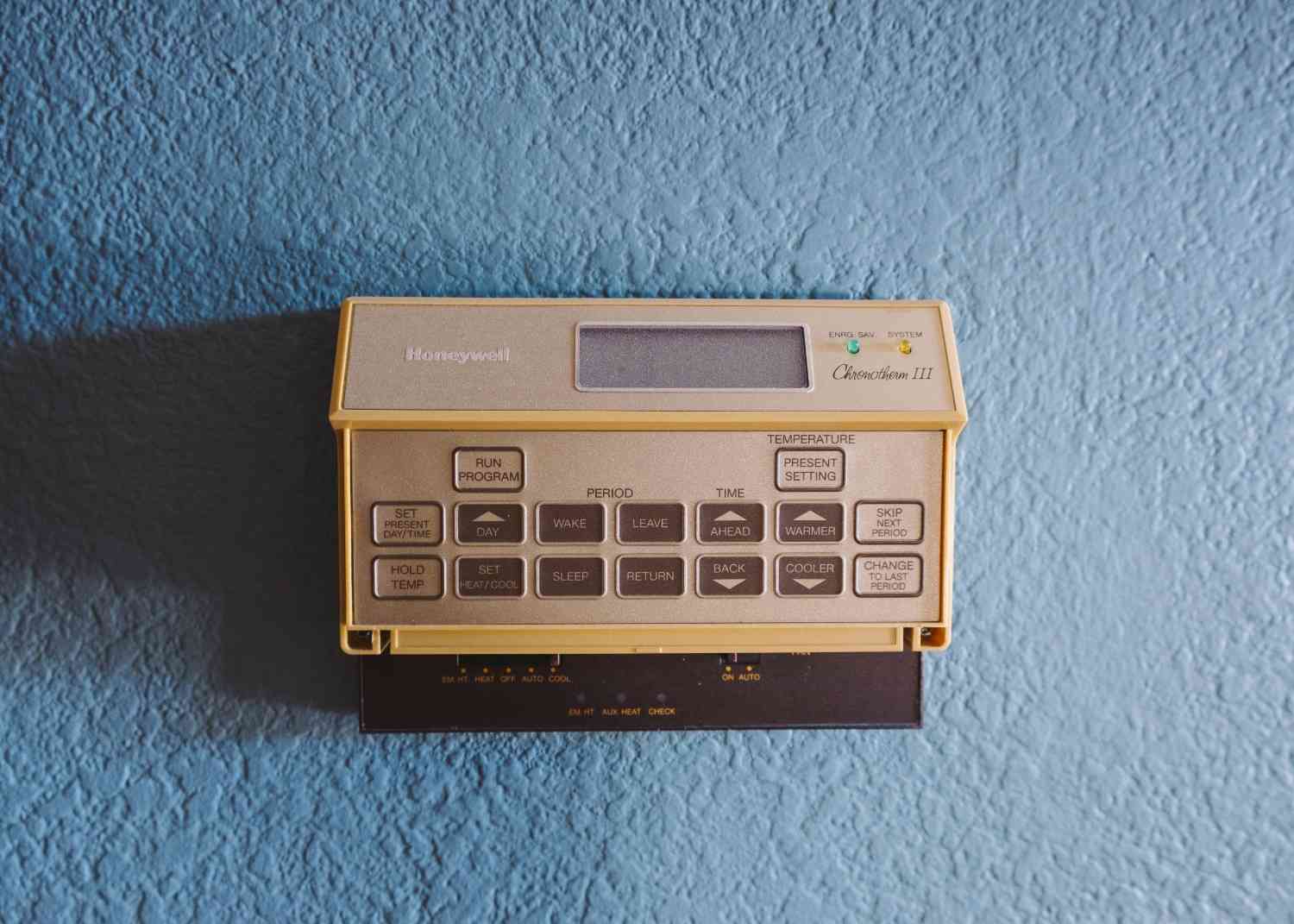Last updated on February 28th, 2024 at 10:16 am
Experiencing boiler troubles can be stressful, and you might be quick to organise a boiler engineer call-out. However, there might be a few issues that you could troubleshoot yourself to save yourself some time and money. Warmable is here to guide you through some common boiler problems and how to tackle them.
In this article, we’ll walk you through the essential steps to diagnose and fix your boiler. Whether it’s a pilot light that won’t stay lit or a faulty thermostat, we’ve got you covered.
What Are Common Boiler Problems?
When dealing with boiler issues, it’s crucial to identify the typical problems homeowners face. Noisy boilers, often termed ‘kettling’, can signal lime-scale build-up, creating a rumbling sound akin to a kettle boiling.
Another frequent complaint involves radiators not heating up. This could indicate trapped air, requiring a simple bleed to restore full function. Sometimes sludge or rust buildup impedes water flow, in which case power flushing by a professional is due.
We also encounter repeated issues with pressure loss, which can stem from leaks or a failing pressure relief valve. Boilers require a certain pressure to operate smoothly, and when it drops, performance suffers. This occures similarly if your boiler has no power, which may be caused by a fuse issue.
Boiler and window leaks are apparent through puddles near the boiler and should be addressed promptly, as they may point to internal component failure.
Lastly, unreliable hot water and heating often confound users, a situation that could arise from a broken diaphragm, airlock, or malfunctioning motorised valves.
For each problem, there are specific troubleshooting steps we can take:
- For noisy boilers: Check for lime-scale and descale if necessary.
- If radiators won’t heat up: Bleed them and consider a power flush.
- To rectify pressure loss: Look for leaks and test pressure relief valves.
- For boiler leaks: Locate the source and replace faulty components.
- When hot water is unreliable: Inspect the diaphragm, clear airlocks, and check motorised valves.
Addressing these common issues swiftly may help us avert a chilly day at home and ensure your boiler’s longevity and efficiency.
How To Diagnose Boiler Issues
When faced with a malfunctioning boiler, accurately pinpointing the issue is crucial. Before attempting any boiler repairs, ensure the safety of your surroundings. Always turn off the boiler and if you smell gas, immediately call a professional.
To start the diagnostic process for common problems:
- Check the thermostat settings and confirm it’s not set too low.
- Examine the pressure gauge; the pressure should typically be between 1 to 1.5 bars.
- Look for error codes on your boiler’s display panel that can indicate specific issues.
- Listen for unusual noises, which could signify air in the system or a failing pump.
- Inspect radiators for cold spots to identify potential sludge build-up.
If your radiators are cold at the top, it might mean that air is trapped. Bleeding the radiators can often resolve this easily. However, if they’re cold at the bottom, this suggests sludge or lime scale is causing a blockage, requiring a more hands-on approach.
In cases of pressure loss, checking for leaks around the boiler or re-pressurising the system may help. If hot water fluctuates or radiators don’t heat up, investigating the diverter valve for faults is advisable.
Remember, troubleshooting can be quite complex, and if you’re unsure about anything, it’s best to consult with a certified technician. Our advice will guide you through the basics but professional help ensures both safety and the longevity of your boiler.
How Do I Fix a Pilot Light that Won’t Stay Lit?
If you’ve ever encountered a pilot light that won’t stay lit, you’ll understand the frustration and the chill it can bring into your home. Fortunately, there are steps that we can take to tackle this problem ourselves before ringing up a professional.
Firstly, ensure the boiler has cooled down and it’s safe to open the appliance. Once it’s safe, locate the pilot light assembly and check for any visible signs of dirt or debris. A common cause for a pilot light failing is a dirty or blocked pilot tube. To resolve this, use a needle or thin piece of wire to clear any obstructions gently.
Next, examine the thermocouple, which is a safety device that turns off the gas if the pilot light goes out. If it’s faulty or improperly positioned, it won’t sense the flame, hence shutting off the gas supply. If you’re confident enough, you can try tightening the thermocouple connection or realign the thermocouple. Be sure to reference the boiler’s manual to ensure you’re handling components correctly.
Another culprit could be a weak gas pressure that fails to keep the pilot light burning. This might need a professional assessment, as gas pressure issues are tied to the gas valve or supply line, which are not as easily serviced.
While we always advocate for safety first and recommend consulting with a certified technician if in doubt, understanding these basics could save you both discomfort and money. Just remember, if you feel out of your depth, it’s better to call in the pros.
Troubleshooting a Faulty Thermostat
When tackling boiler issues, the thermostat often gets overlooked. A faulty thermostat can lead to uneven heating or a boiler that doesn’t kick in when it should. To ensure our homes stay warm and our boiler functions efficiently, we need to check and troubleshoot the thermostat:
- First off, we’ll want to verify the power supply. A simple check is to ensure the thermostat’s display is functioning. If there’s no display, it could be due to dead batteries or a tripped fuse. Let’s replace the batteries or reset the fuse and see if that solves the problem.
- Next, we’ll adjust the temperature settings. It’s important to set the thermostat higher than the current room temperature to prompt the boiler to start. If the boiler doesn’t respond to this adjustment, there may be a deeper issue with the thermostat’s internal wiring or sensors.
- We should also look at the thermostat’s location. Poor placement can greatly affect its performance. If it’s too close to other heat sources or in a draughty hall, the readings won’t reflect the home’s overall temperature. We might consider repositioning the thermostat for a more accurate reading.
- Lastly, let’s not forget to inspect the heating schedule programmed into the thermostat. Incorrect schedules could mean our heating isn’t coming on when we expect it to. Reviewing and adjusting the settings could be the quick fix we’re after.
If after all these steps the thermostat’s still unresponsive, it might be time for a replacement or professional assessment. Even with our DIY savvy, some issues require the expertise of a qualified technician to ensure they’re addressed safely and effectively. You could also invest in a smart thermostat which come with a range of modern features to help maximise the efficiency of your home heating.
Conclusion
We’ve armed you with the knowledge to tackle common boiler issues that can often be remedied with a bit of DIY savvy. From checking the thermostat to bleeding radiators and clearing a stubborn pilot light, you’re now equipped to restore warmth and comfort to your home.
Remember, regular boiler service can prevent many of these problems from arising in the first place. Should you encounter more complex issues, don’t hesitate to call in a professional. Warmable can help schedule an on-site visit from a trusted boiler engineer wherever you are located in the UK – fill in our online form to get started.
Frequently Asked Questions About Boiler Fixes
What Initial Steps Should I Take To Diagnose a Boiler Problem?
Firstly, verify the thermostat settings are correct. Next, examine the boiler’s pressure gauge and look for error codes on the display panel. Also, listen for any unusual noises and check if radiators have cold spots.
How Can I Fix Cold Spots In My Radiators?
To fix cold spots at the top, you might need to bleed the radiator to release trapped air. If the cold spot is at the bottom, this may indicate a blockage caused by sludge or lime scale, which may require cleaning.
What Should I Do If My Boiler Pressure Is Too Low?
If your boiler’s pressure is low, you might need to re-pressurise the system. Always refer to your boiler’s manual for the correct procedure and ensure the system is cool before attempting.
How Can I Address Hot Water Fluctuations or Unheated Radiators?
Fluctuating hot water or radiators that do not warm up could be due to a faulty diverter valve. Investigate for any faults and consider replacing or repairing the valve as needed.
Why Won’t My Pilot Light Stay Lit And How Can I Fix It?
If your pilot light won’t stay lit, check for and clean out any debris. Also, clear obstructions and examine the thermocouple. Low gas pressure can be another factor, which might call for professional assistance.
What Should Be checked When Dealing With a Faulty Thermostat?
Ensure the power supply to the thermostat is on, adjust temperature settings as needed, and consider the thermostat’s location and heating schedule. If unresponsive, it may require replacement or a professional’s assessment. Consider installing a smart thermostat.


